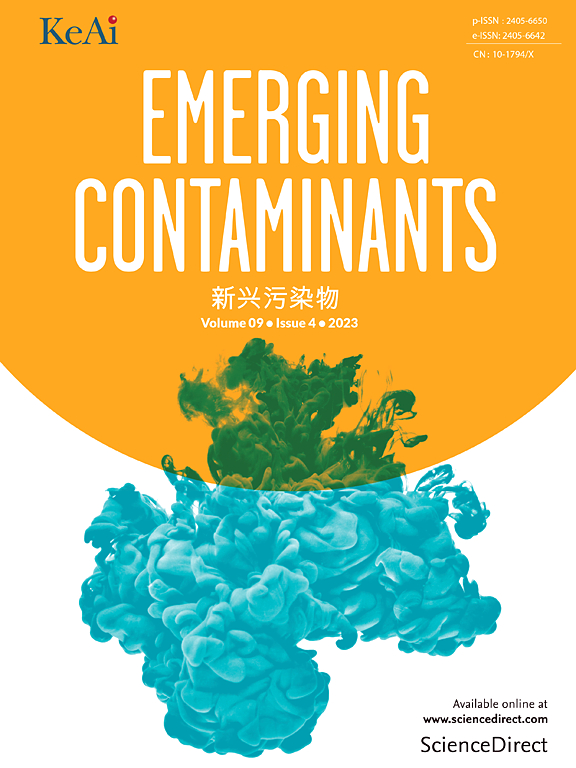Effects of antibiotics and heavy metals on ARGs in Danjiangkou Reservoir
IF 6.9
2区 环境科学与生态学
Q1 ENVIRONMENTAL SCIENCES
引用次数: 0
Abstract
Antibiotic resistance genes (ARGs) have attracted more and more attention due to their potential exposure hazards. The Danjiangkou Reservoir (DJKR) is the source of water for the Middle Route Project under the South-to-North Water Transfer Scheme in China. To clarify the distribution of ARGs and their influencing factors in DJKR (including Danjiang Reservoir (DR) and Hanjiang River Reservoir (HR)), we used metagenomic analysis to investigate the ARGs. The results showed that the most abundant bacteria of both parts were Proteobacteteria. Antibiotic efflux (58.2 %) and alteration of antibiotic targets (69.4 %) were the main mechanisms in DR and HR. The composition of ARG species was similar in the two parts, but the number of ARG isoforms in HR was significantly higher than that in DR. ARG Intl1 was detected in both DR and HR. Network analysis showed a significant correlation between mobile genetic elements (MGEs) and ARGs. Heavy metals also showed a significant correlation with ARGs. Interestingly, the relationship between heavy metals and ARGs were more significant than that between antibiotics and ARGs.
抗生素和重金属对丹江口水库ARGs的影响
抗生素耐药基因因其潜在的暴露危害而受到越来越多的关注。丹江口水库是中国南水北调中线工程的水源地。为明确该区(包括丹江水库和汉江水库)ARGs的分布及其影响因素,采用宏基因组分析方法对ARGs进行了研究。结果表明,两部分细菌数量最多的是变形杆菌。抗生素外排(58.2%)和抗生素靶点改变(69.4%)是DR和HR的主要机制。两部分的ARG种类组成相似,但HR中ARG同种异构体的数量明显高于DR中ARG同种异构体的数量。网络分析表明,移动遗传元件(MGEs)与ARGs之间存在显著的相关性。重金属也显示出与ARGs的显著相关性。有趣的是,重金属与ARGs之间的关系比抗生素与ARGs之间的关系更显著。
本文章由计算机程序翻译,如有差异,请以英文原文为准。
求助全文
约1分钟内获得全文
求助全文
来源期刊

Emerging Contaminants
Medicine-Public Health, Environmental and Occupational Health
CiteScore
10.00
自引率
6.70%
发文量
35
审稿时长
44 days
期刊介绍:
Emerging Contaminants is an outlet for world-leading research addressing problems associated with environmental contamination caused by emerging contaminants and their solutions. Emerging contaminants are defined as chemicals that are not currently (or have been only recently) regulated and about which there exist concerns regarding their impact on human or ecological health. Examples of emerging contaminants include disinfection by-products, pharmaceutical and personal care products, persistent organic chemicals, and mercury etc. as well as their degradation products. We encourage papers addressing science that facilitates greater understanding of the nature, extent, and impacts of the presence of emerging contaminants in the environment; technology that exploits original principles to reduce and control their environmental presence; as well as the development, implementation and efficacy of national and international policies to protect human health and the environment from emerging contaminants.
 求助内容:
求助内容: 应助结果提醒方式:
应助结果提醒方式:


